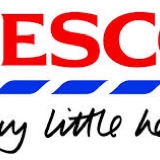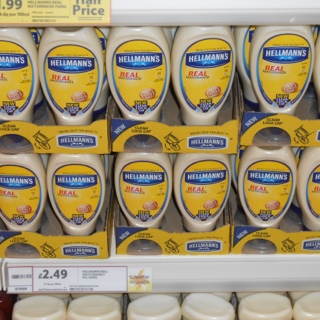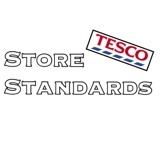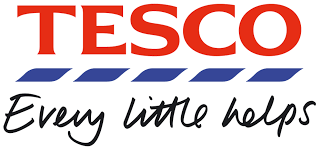Information
-
Store Name and Number
-
Week number
-
Better Waste Routines Audit
-
Conducted on
-
Completed by
-
Completed with
Reductions
-
Is resource in place to complete a thorough potential reduction scan 7 days a week from 5pm - Produce/Horticulture/Meat/Poultry/Dairy/Bread.<br>Resource is not being used to support other areas.<br>
-
Are all staff trained correctly to complete the potential scan? Is additional resource in place to cover sickness and holidays?
-
Does the duty manager review that the potential scan is actioned?
-
Is the better waste routines report reviewed and 85% target achieved. Any department not achieving 85% has a plan in place to review.
-
Member of stock control attending the daily waste meeting?
-
Reduction times reflect the trade of the store. We recommend a first reduction of 12pm and a second reduction of 5pm. These can be updated for each department in the store ordering system - option 2,3
-
The top 20 waste exceptions from store reports are being reviewed daily/weekly. Evidence to be shown.
-
Start of trade reductions are carried out as part of the potential scan?
-
Final reductions are completed towards the end of the night and duty managers stand over the final markdown to ensure all products sell through.
Waste Review
-
Daily waste meetings take place with managers who have overspent/under % on deep dive and next steps taken. Evidence to be shown.
-
The waste meeting is run by the deputy manager/duty manager or waste champion.
-
Replenishment staff understand their daily targets?
-
All trading departments have daily and weekly targets in £ sterling.
-
All managers are aware of current week, period, quarter and YTD performance.
Controls
-
Safe and legal books are completed daily including temp control books.<br>
-
Damages and OOCs are correctly recorded to maintain stock record accuracy and cleared at end of trade.
-
Recorded waste is fully checked by the duty/department manager before being disposed of. Evidence to be shown - you should review the last weeks waste reports, looking out for any download errors.
-
Reduced to clear sections on the shop floor are clean, tidy with the correct stripping and POS in place.
-
All wheelie bins and compactors are locked and waste prints are reviewed before products are disposed of?
Backrooms
-
Stock is stored at the correct temperature. (Check frozen and chilled areas, red produce labels)
-
Waste areas are clean, tidy and well organised. Damages and products not for sale are kept separate with signs in place. Fresh and ambient.
-
No OOCS products are found in the back rooms (unless in designated waste areas). Check chillers, crisps, walkers pallets.
-
Critical cages for EPWs, new lines and short coded products are in place with correct signage- fresh and ambient.
-
Stock stored in sheds is protected from weather/rodents.
Produce
-
Review function is used to action reductions.
-
All critical chilled products (red labels) are stores at the correct temperature.
-
Plants are watered first thing in the morning and throughout the day when needed.
-
All products are fully rotated on the shop floor and in back rooms. (Do random checks)
ISB and Plant Bread
-
Review function is used to action reductions.
-
Bread from the previous days bake is sliced for sale.
-
Bakery production analysis report is reviewed daily to highlight over production and actions have been taken to reduce waste.
-
Plant bread returns are completed daily and the corporate routine is correctly followed.
-
Long life cake is code checked at least weekly and no OOCs are on display.
-
All products are fully rotated on the shop floor and backrooms (do random checks)
Dairy
-
Review function is used to action reductions.
-
Long life products are code checked ever week Monday-Thursday as highlighted in the department safe and legal record.
-
Milk returns are completed daily and the corporate routine is correctly followed.
-
During aisle set up at the end of each aisle a blue tray is available for reductions and a green tray is available damages.
-
There is evidence that products fit for sale are salvaged and repaired.
-
All products are fully rotated on the shop floor and back rooms (random checks)
Grocery and Frozen
-
The ambient and non food rotation planner RP1550 is used, up to date and on display.
-
The date scanning function is used to complete grocery rotation checks and the weekly OOC risk report is reviewed and the reductions actioned to clear products through as required.
-
Fix at shelf stickers are in under shelf drawers and there is evidence that they are being used to repair products that are fit for sale.
-
During aisle set up at the end of each aisle a blue tray is available for reductions and a green tray available for damages.
-
All products are fully rotated on the shop floor and in backrooms. (Random checks)
Dotcom
-
Dotcom returns are managed daily and returned to the relevant departments.
Nights/Twilights
-
Different coloured trays are in place as part of aisle set up and these are used to separate damages; green tray - damages, blue tray - products to be reduced or salvaged and are being separated by night teams.
-
Fix at shelf stickers are being used to repair products on the shop floor that are fit for sale.
-
No products are kept out of the cold chain for more than 20 minutes and the most recent cold chain audit is green.










